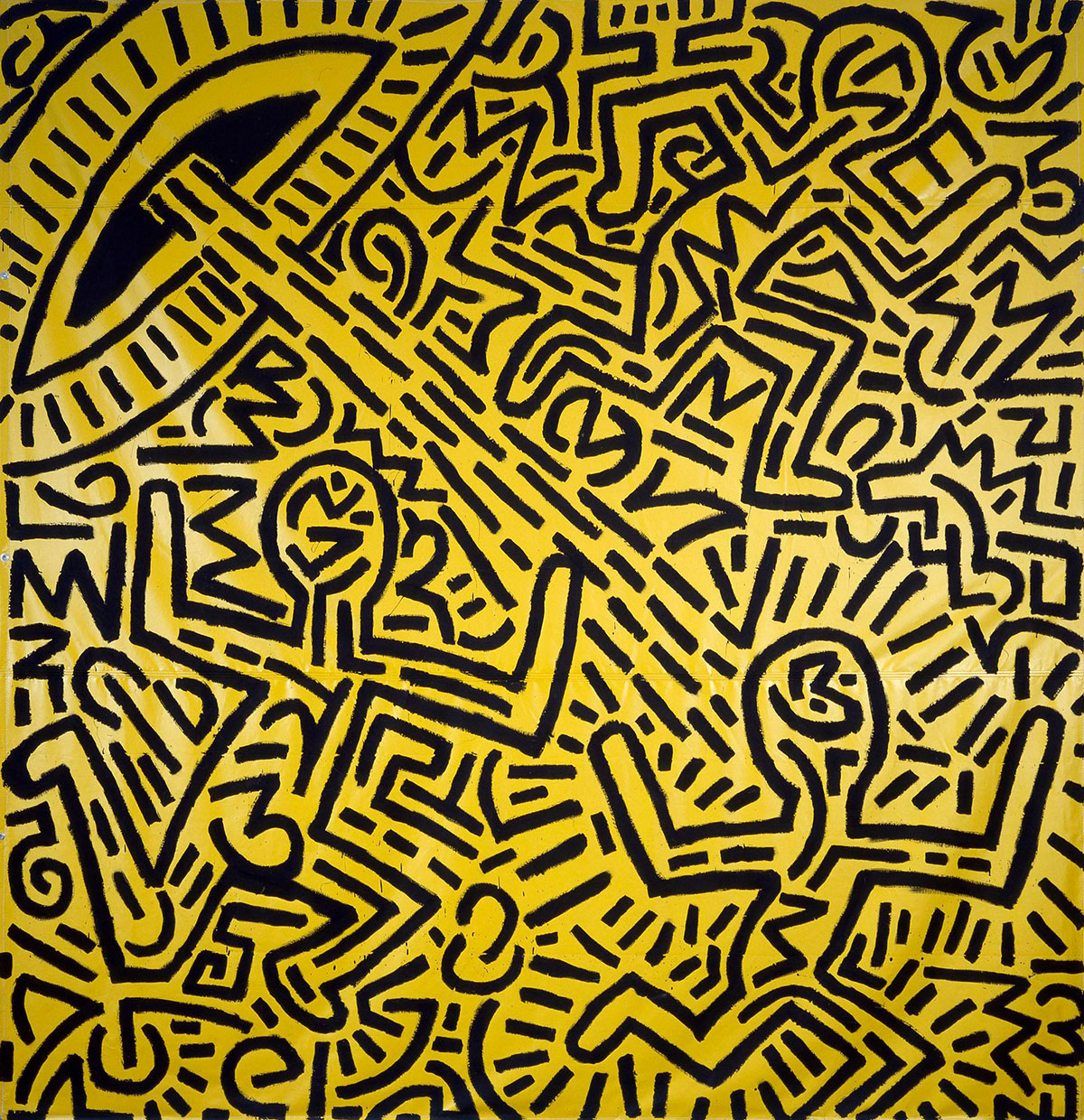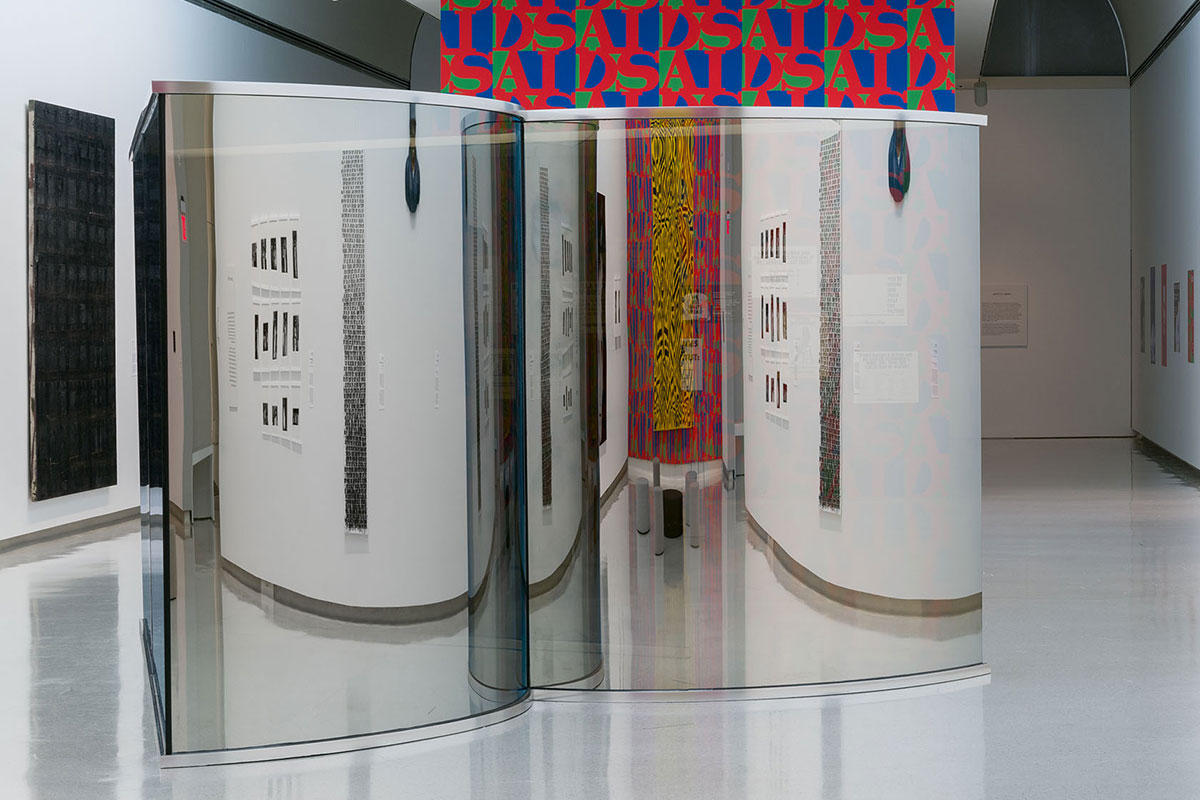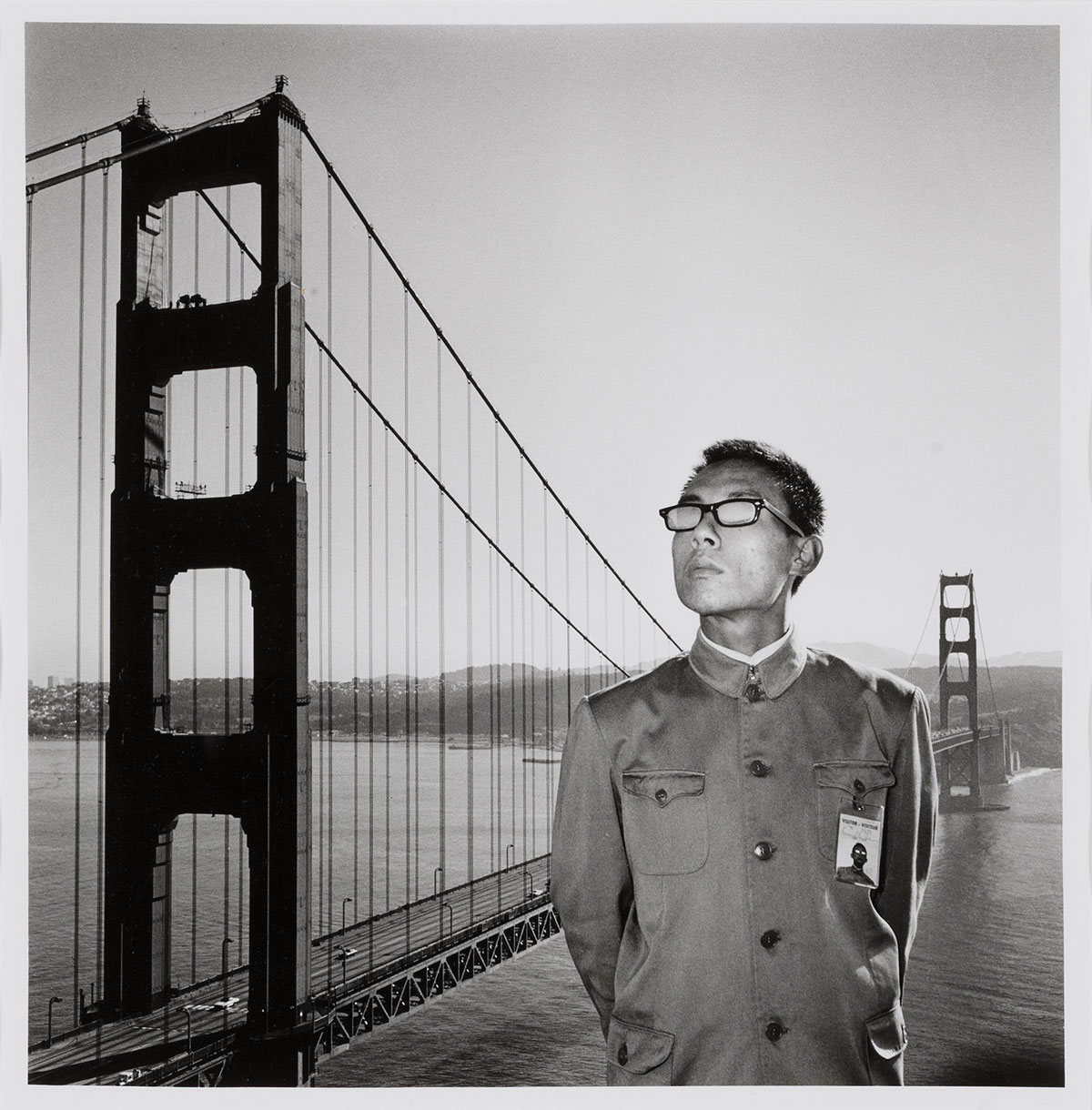Welcome to Tour Tuesday! Today, we’ll be guiding you through a section of our galleries of postwar and contemporary art called Less than Half the Picture.
This gallery focuses on works from the 1980s, a period of widespread debate about the value and role of art in society. A new generation of artists embraced politically charged ways of working in response to the most vital issues of the day, such as the AIDS crisis, questions of identity and nationality, and many others.
Follow along as we highlight some of the works in this gallery!

We’re kicking off a tour of our 1980s gallery with one of the largest works—this painting by Keith Haring. Haring rose to prominence in New York City during the early 1980s due to his popularity as a graffiti artist whose work was visible throughout the city’s subway system.
His unique iconography and colorful graphic style, which you see in this painting, would be the hallmark of his work for the remainder of his career.

“Everything I do is a hybrid.”
Dan Graham’s pavilion sculptures exist somewhere between art and architecture. Heart Pavilion’s mirrored form evokes 1960s Minimalism, using materials that reference the gleaming surfaces of skyscrapers.
Outside the pavilion, the mirrored glass reflects the viewer and the gallery; inside, the pavilion acts like a window. This play of reflection and transparency conflates the roles of viewer and viewed that we all experience as we move about the world.

We’re continuing this tour with the Guerrilla Girls, a group of feminist activist artists who explore gender and racial gaps within the art world. They launched their practice in 1985 to protest an exhibition at the Museum of Modern Art in New York that featured 148 men, 13 women, and no female artists of color.
Using humor, data, and flashy graphics, the group calls out injustices, undermines the mainstream, and promotes intersectional feminism.

To wrap up our Tour Tuesday, we’re sharing this work by Tseng Kwong Chi. The artist was a key participant and documentarian of the downtown New York scene of the 1980s.
This image is from the series East Meets West, alternatively titled Expeditionary Self-Portrait Series, which captures the artist performing as a fictional Chinese dignitary posed in front of popular landmarks. Although they look like tourist snapshots, these photographs importantly—and humorously —grapple with identity politics and ideas of cultural exchange.